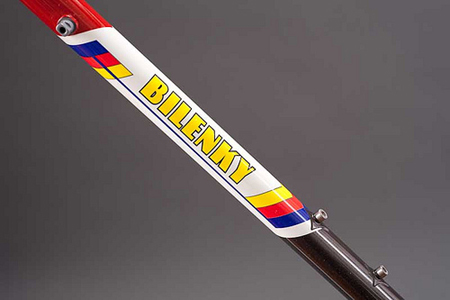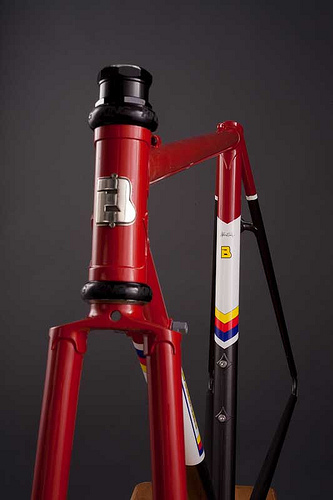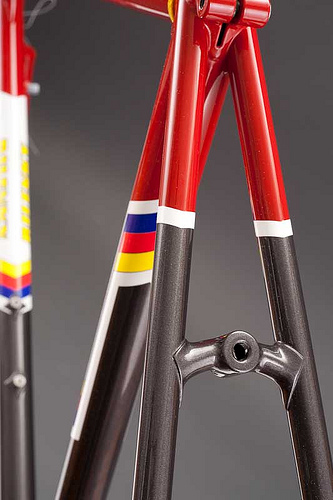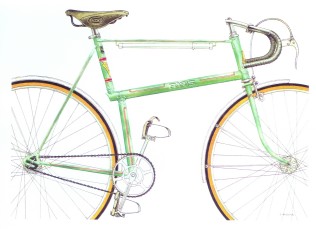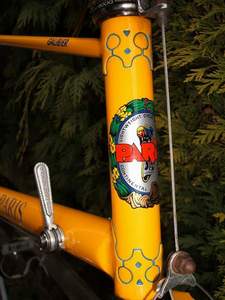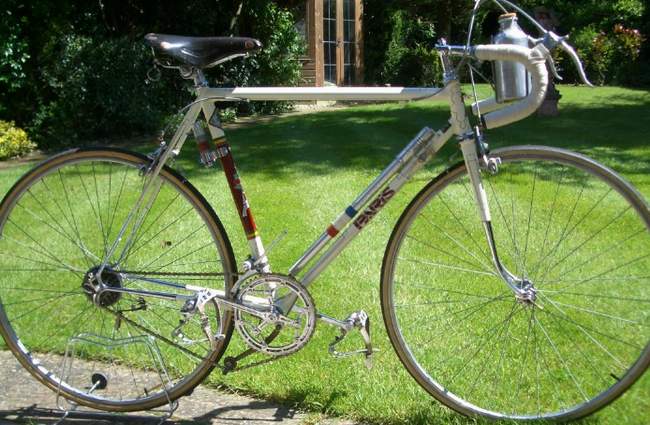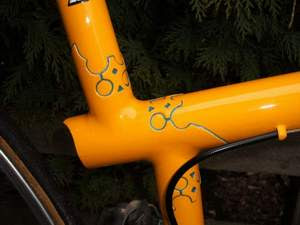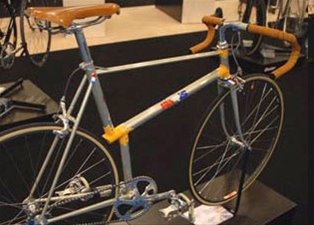Mike Melton 1949 - 2011
 Fri, January 28, 2011
Fri, January 28, 2011  I just received the sad news this morning that former framebuilder Mike Melton passed away Wednesday, January 26th 2011.
I just received the sad news this morning that former framebuilder Mike Melton passed away Wednesday, January 26th 2011.
I met Mike soon after I came to the US in 1979; I was working for Paris Sport in New Jersey and was building some special aerodynamic bikes for the US team. (Mike is on the right in the picture on left.)
The tubing was specially developed for the project by Reynolds Tube Company in England, and time was running short to get the frames finished, so Mike Melton was called in to help me.
After that Mike went back to his frame business in Columbia, South Carolina, and I later went to California to work for Masi. Mike and I would usually run into each other at the annual bicycle trade shows.
From 1982 to 1999 Mike worked for the Huffy Bicycle Company in Dayton, where he designed and built bicycles for Huffy-sponsored athletes, including the 1984 and 1988 U.S. Olympic Cycling Teams.
Mike developed some special carbon fiber frames for the Olympic athletes, when that particular technology was in its infancy.
Mike Melton who had served in the U.S. Navy from 1970-1976 and was a Vietnam combat veteran, had been sick for the last four years with a rare neurological disease believed to be spinal cerebella ataxia, similar to ALS or Lou Gehrig’s disease.
I did get to speak with Mike last May, however it was a difficult somewhat one sided conversation as the disease had affected his ability to speak. Never-the-less I felt privileged to have the opportunity of this brief contact after so many years.
Mike’s wife Jamie has asked if anyone has pictures of Mike or his work to forward them to her: mjzmelton@gmail.com
Addendum February 2nd 2011: I received the following tribute from Bill McCready; Founder and President of Santana Cycles, where Mike Melton worked in the 1980s.
In 1982, after Mike Melton's financial backer locked him out of the year-old Melton Bicycle factory in Delaware, Ohio, Mike phoned me to ask about a job at Santana. Because I knew Mike's work, had talked to him at trade shows and expos, and had sold his frames at my retail store (Bud's Bike Shop), I immediately agreed.
Mike, a gifted designer, moved to California to become Santana's original staff Engineer. His first duty was to audit all the various build processes at my six-year-old tandem factory. Next, we bought the partially-prepped tandem tubesets from Mike's former financial backer and used them to create a less expensive line of "Solana" tandems with Reynolds 531 tubing.
When the resulting frames didn't perform as well as we had hoped, the resulting discussions caused me to have Mike create a tandem version of the "Tarantula" frame efficiency evaluation jig that Gary Klein built for Bicycling Magazine. Using this apparatus we experimented with various designs and "invented" the Direct Lateral layout that soon eclipsed all previous tandem frame designs.
One of Santana's early tandem customers (as well as my friend from previous years) was Chester Kyle, who came by the factory one day to inform me that he was doing aerodynamic consulting for the U.S. National Cycling Team. When Chet sketched out some crude ideas and asked me if Santana could fabricate some experimental stems and forks for him, I introduced him to Melton. With my approval Mike built Chet's designs after hours at Santana.
After Chet and the new sponsor of the National Team (Huffy Bicycle Company) realized how gifted Mike Melton was at design and fabrication, they offered him a job designing and building bikes for the upcoming 1984 Olympics. When Mike, who felt he owed it to me to remain at Santana, asked what he should do, I said "It's a once in a lifetime opportunity—Go!" Mike moved back to Ohio and, over the following few months, designed many of the bikes that were used to win America's first medals in Olympic Cycling.
On the eve of the LA Olympics, Mike showed up at Santana with a van full of his bikes that needed an overnight repaint. We were happy to help.
Mike and I remained friends and would meet if and when when Huffy sent him to cycling trade shows. We kept his number in Santana's Rolodex, and often called to ask for help. Mike assisted Santana with a number of projects; and was especially helpful with the geometry of track tandems. The last time I talked with Mike (in the late '90s?) he told me that he'd lost his fervor for cycling and was busy modifying Cobra race cars.
I'll always remember Mike Melton for his creativity, ready smile and positive outlook.
Bill McCready






















